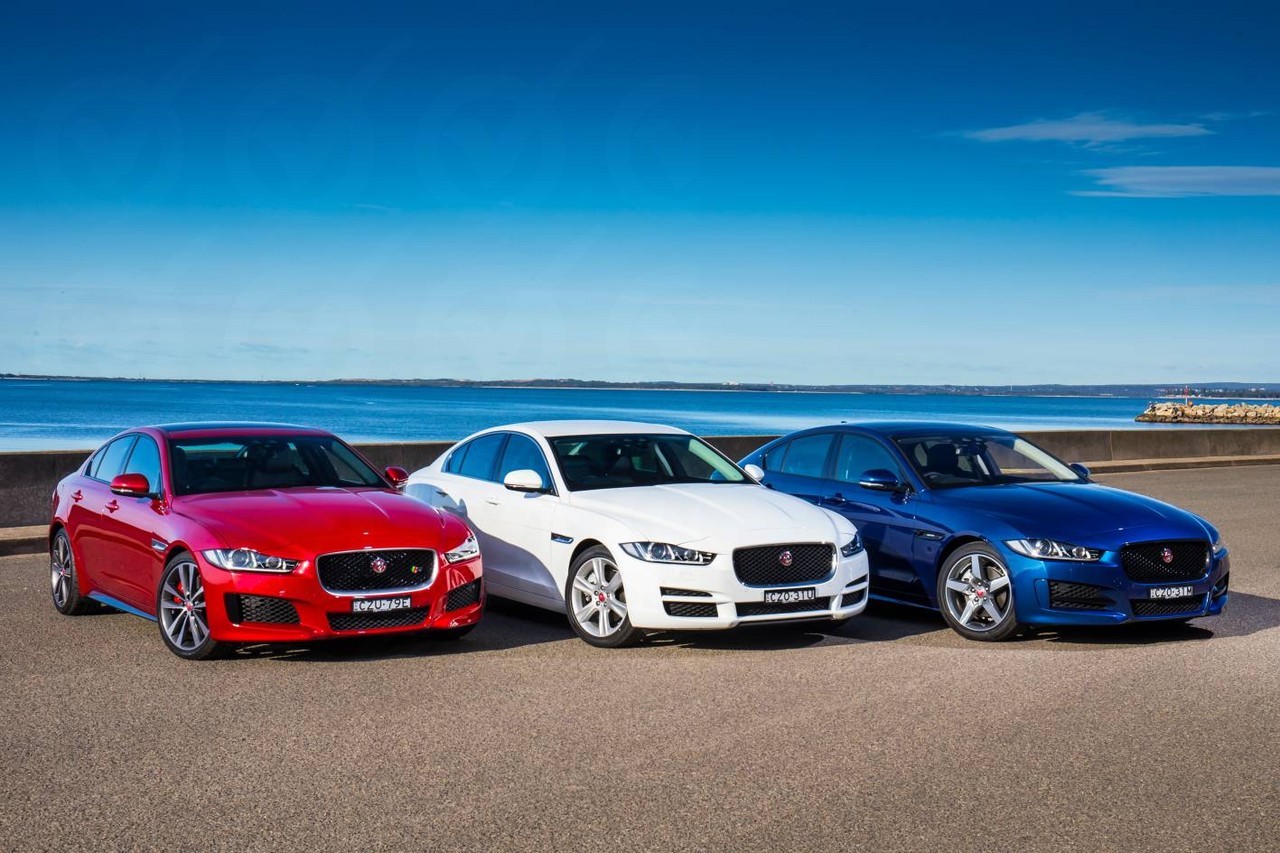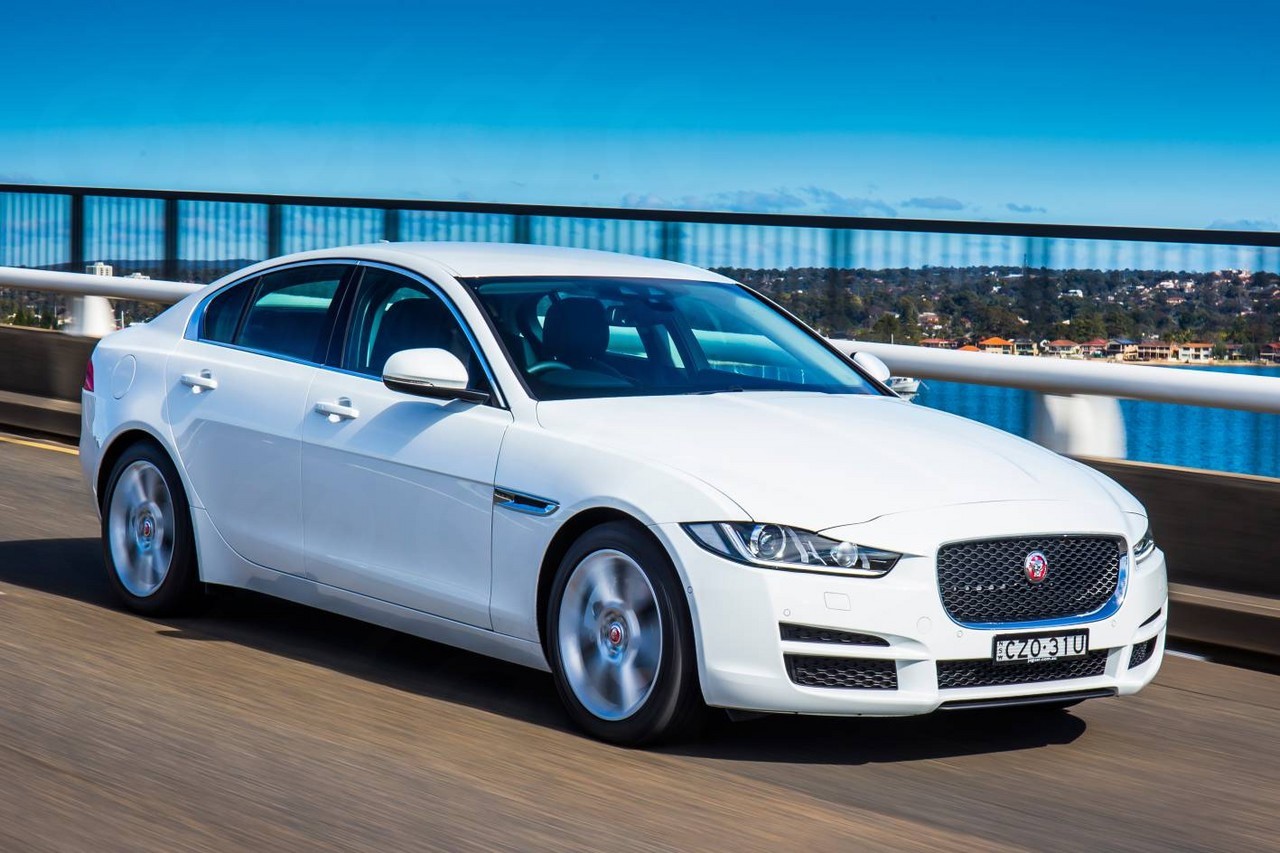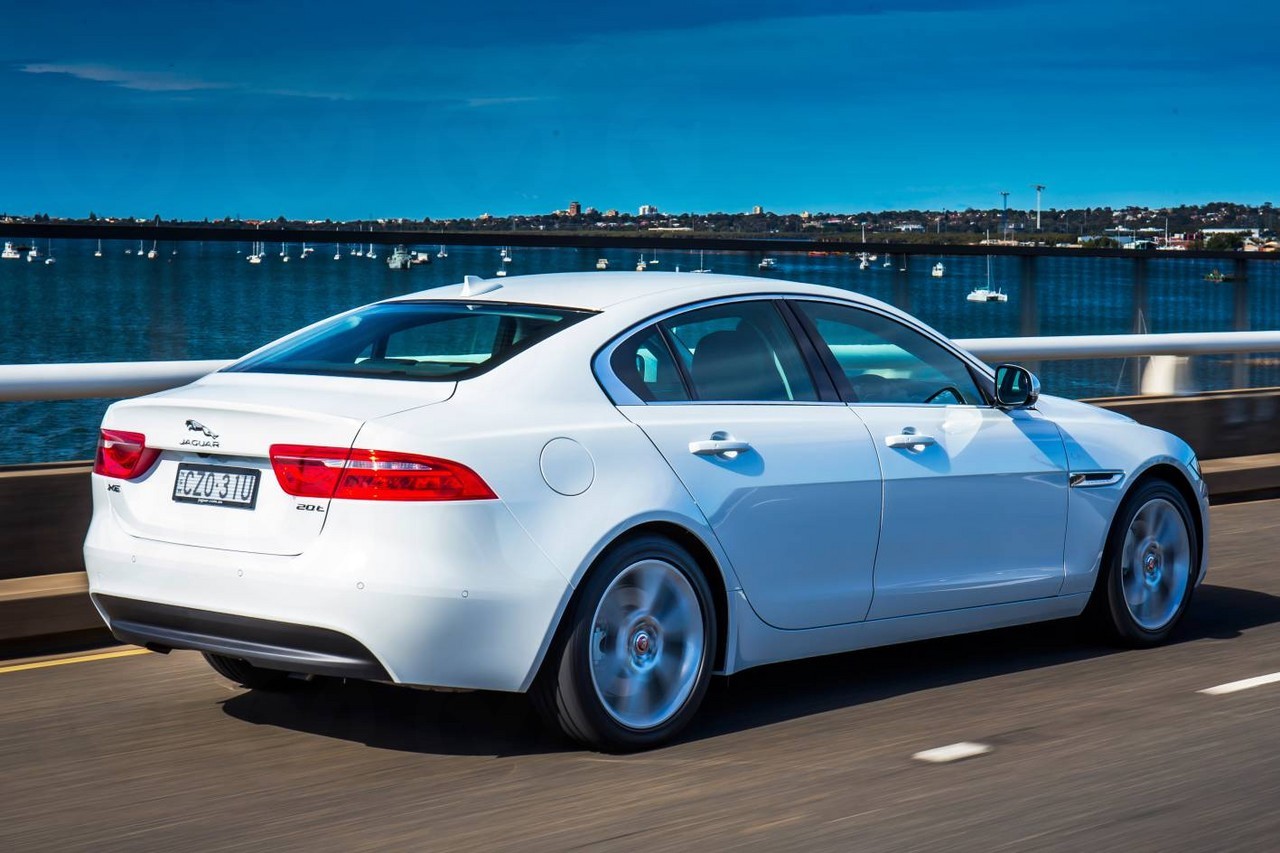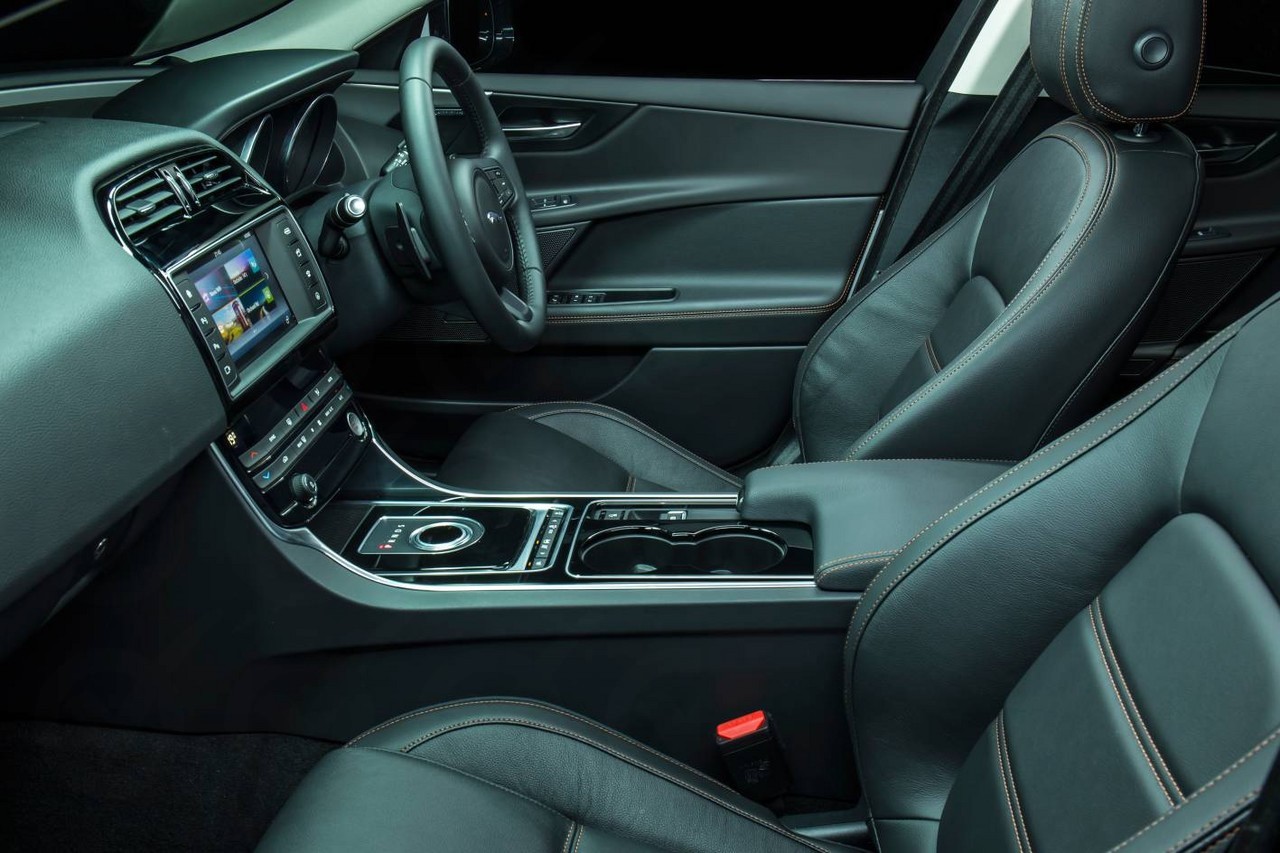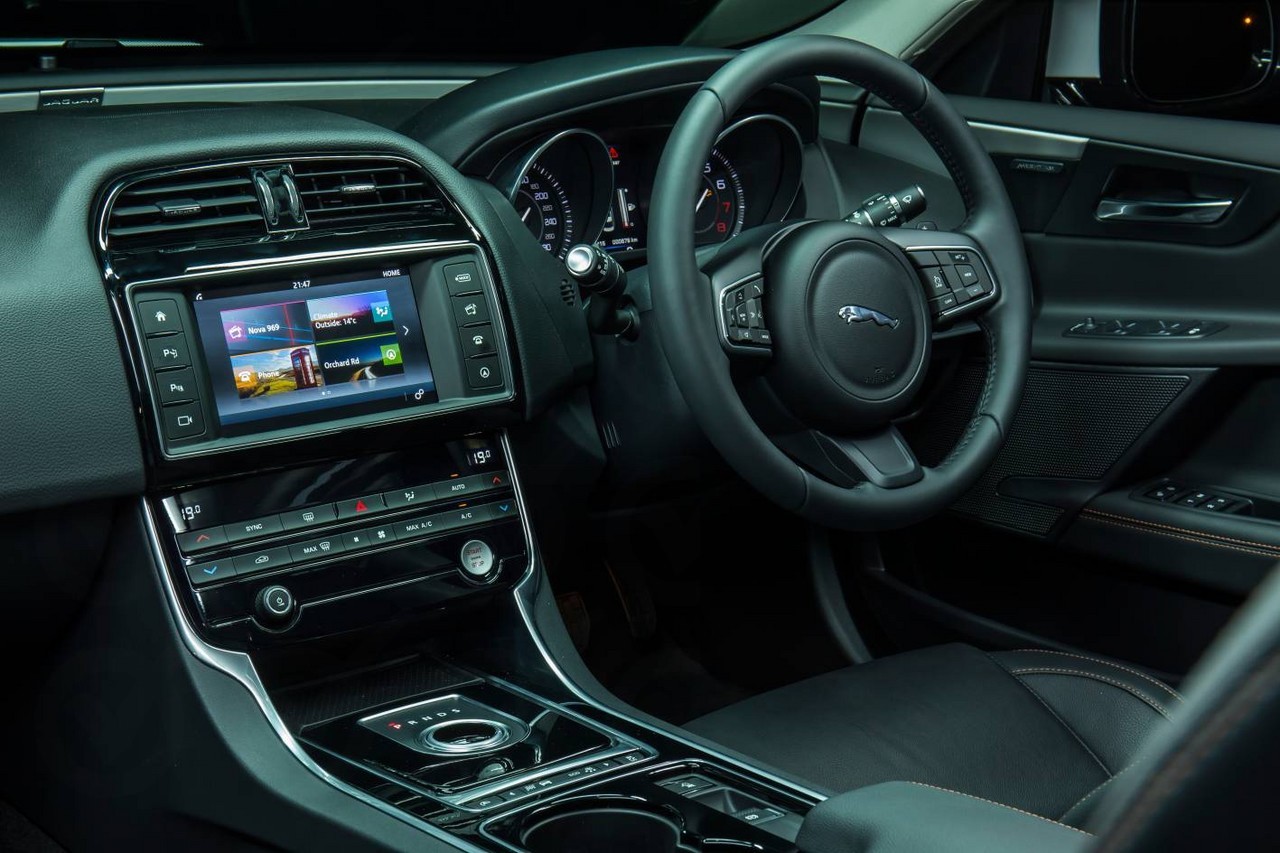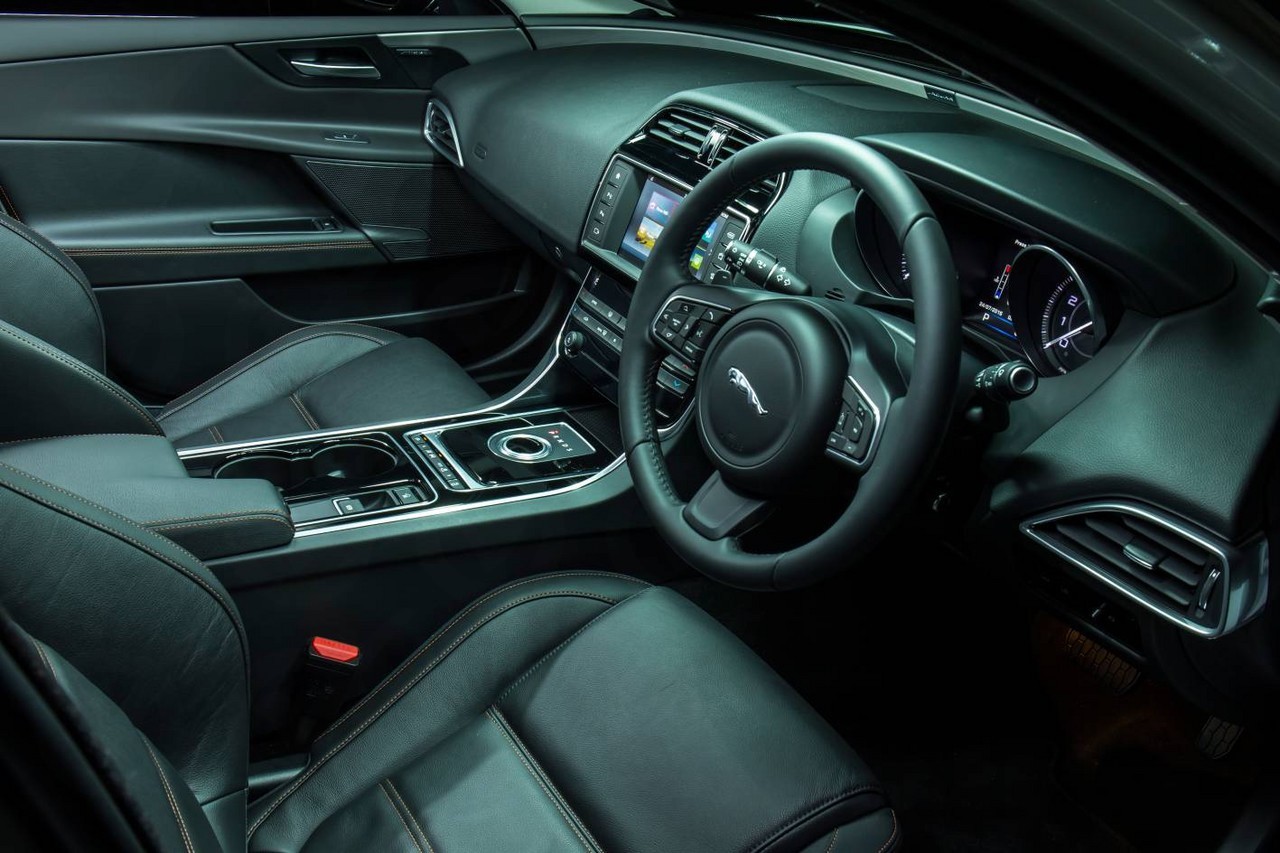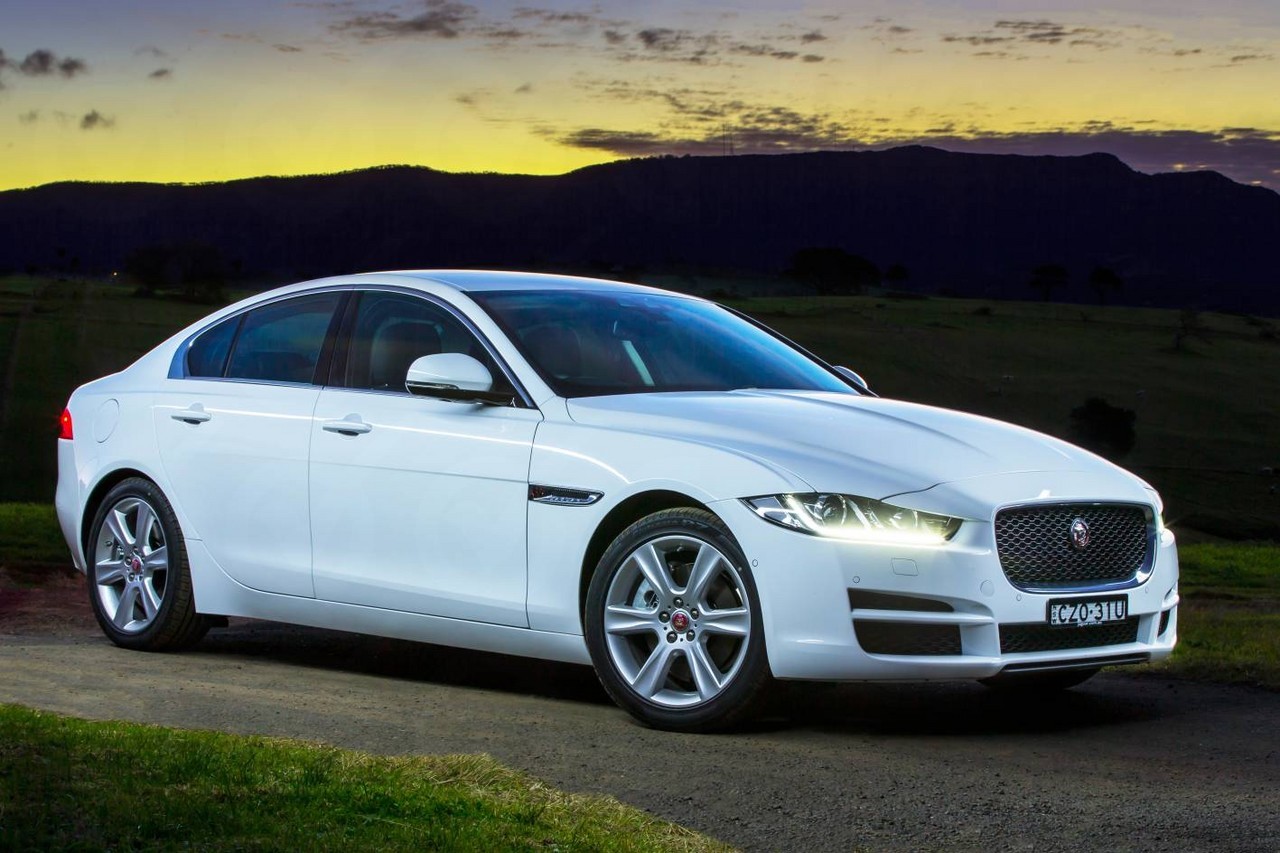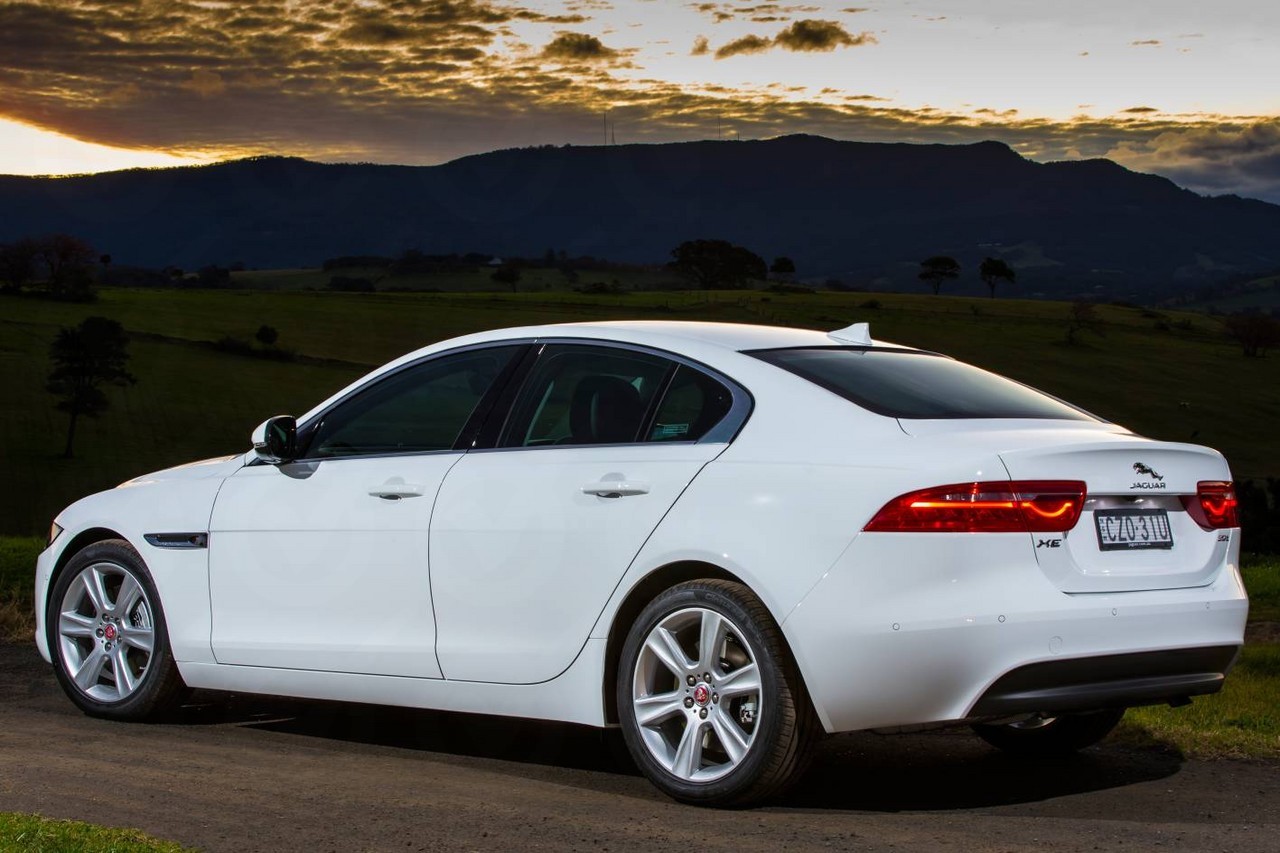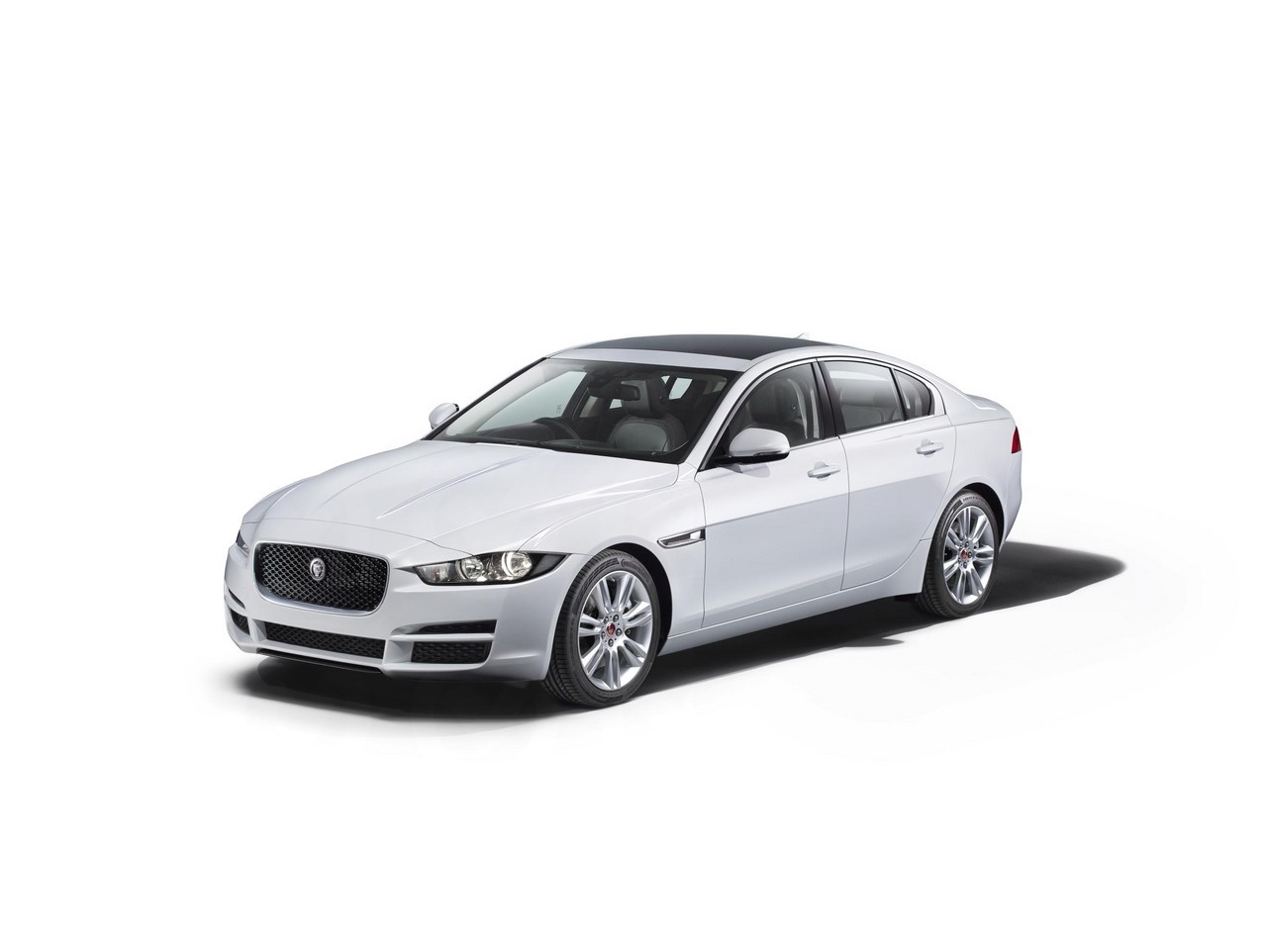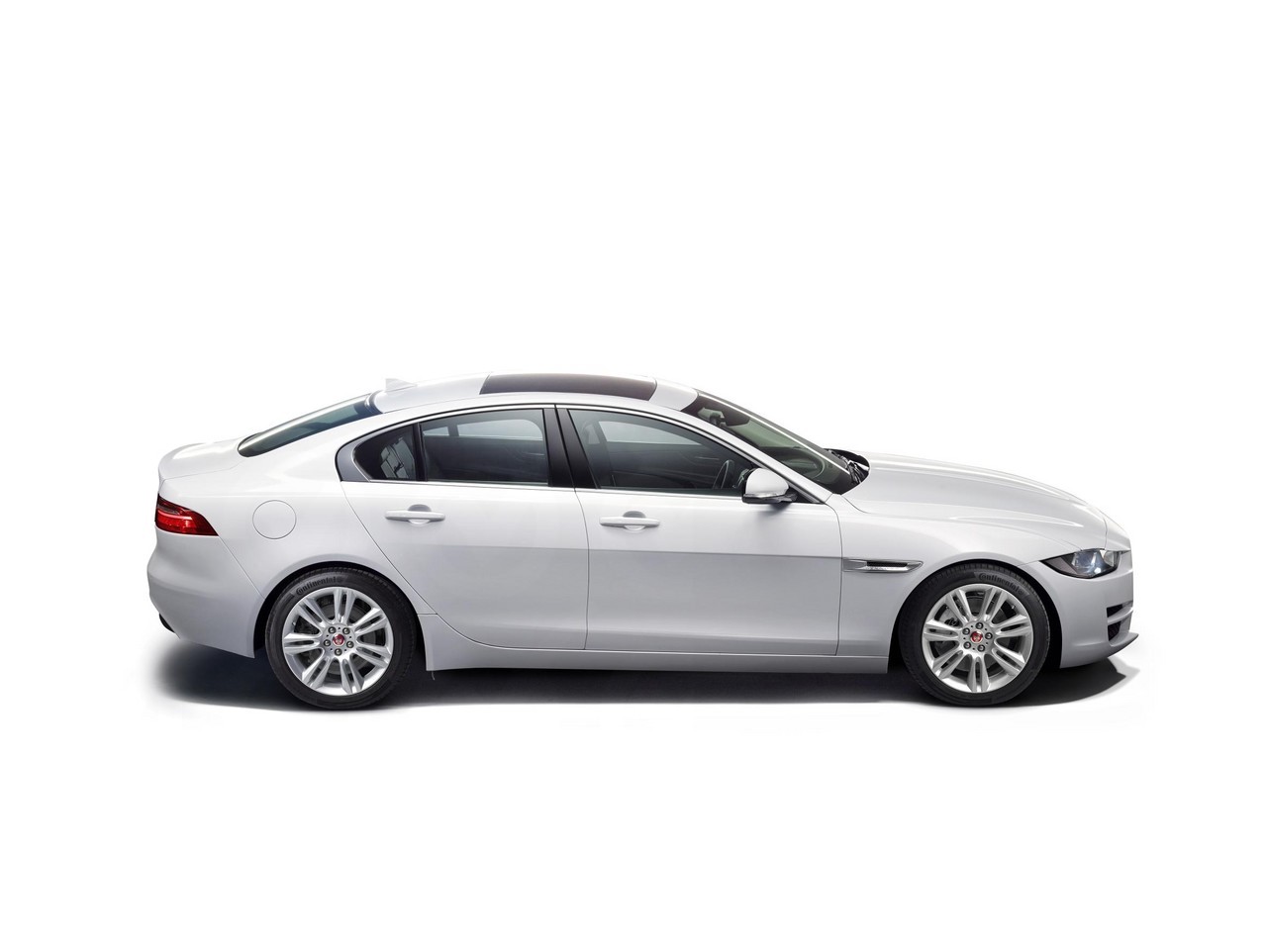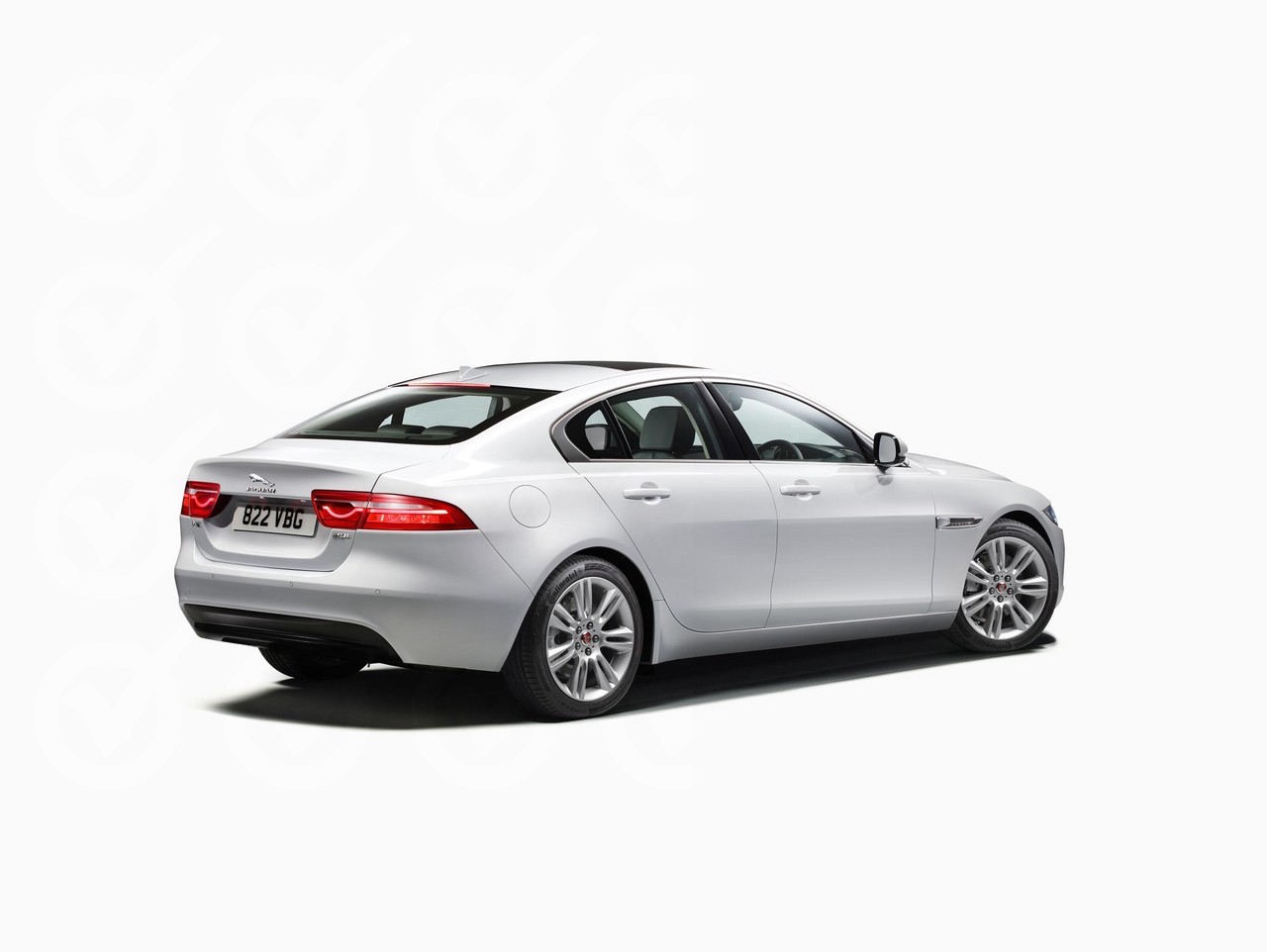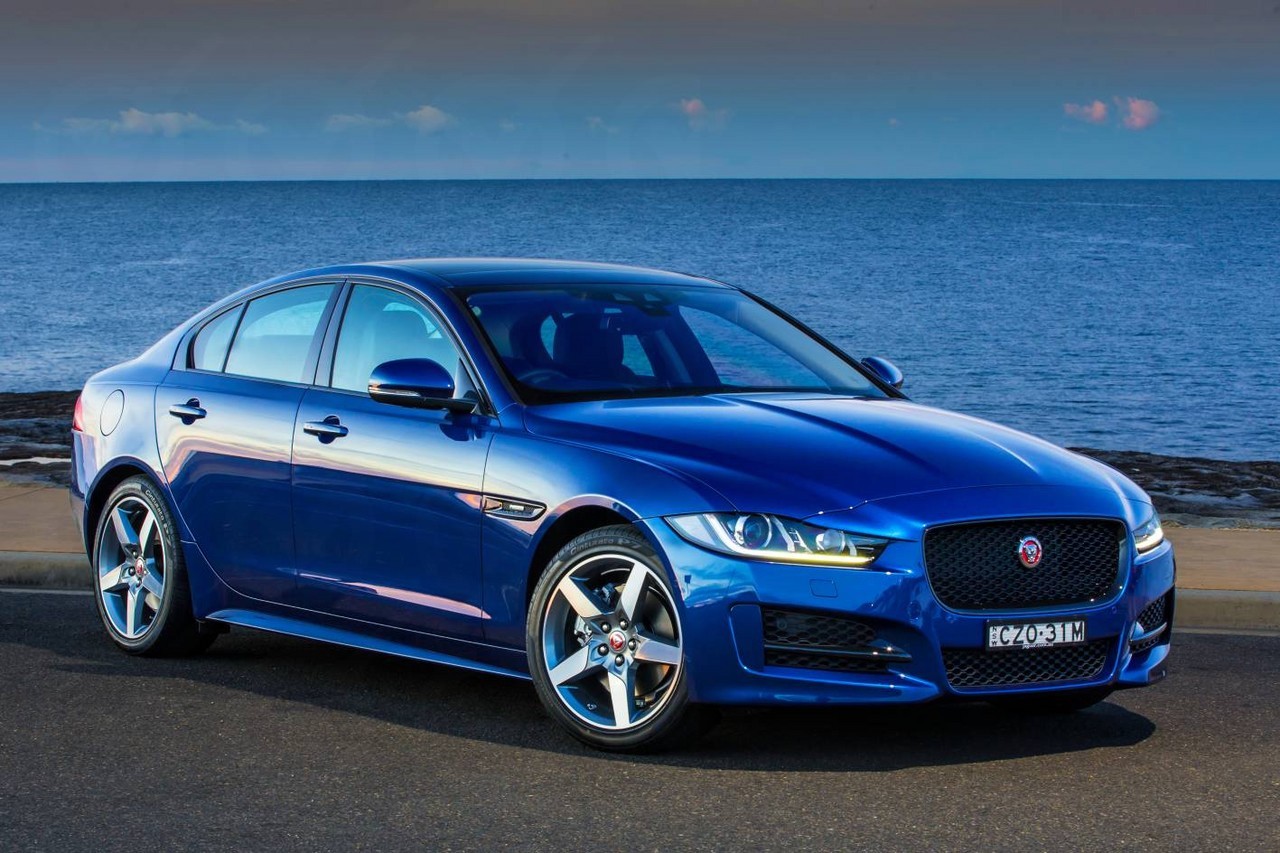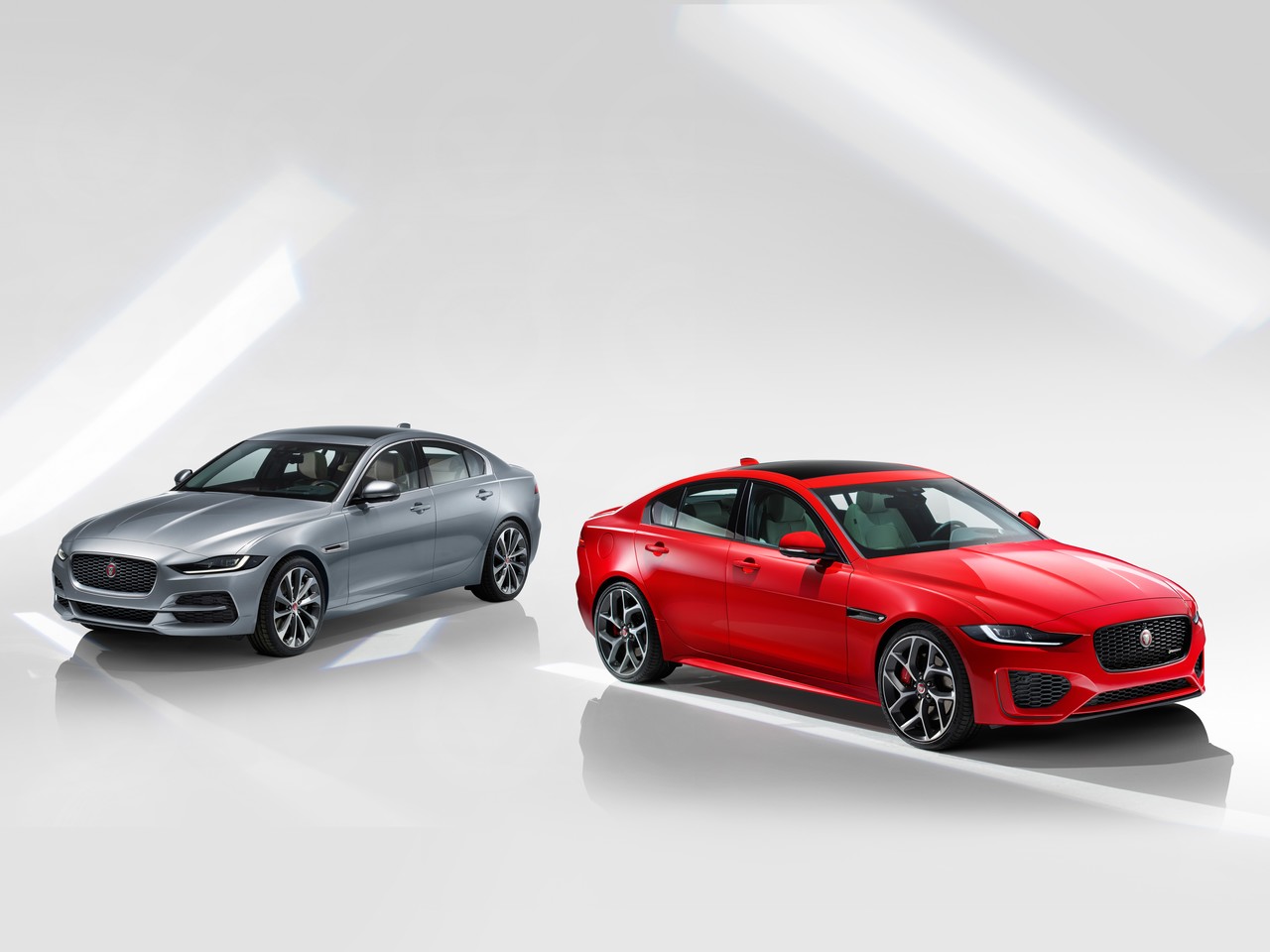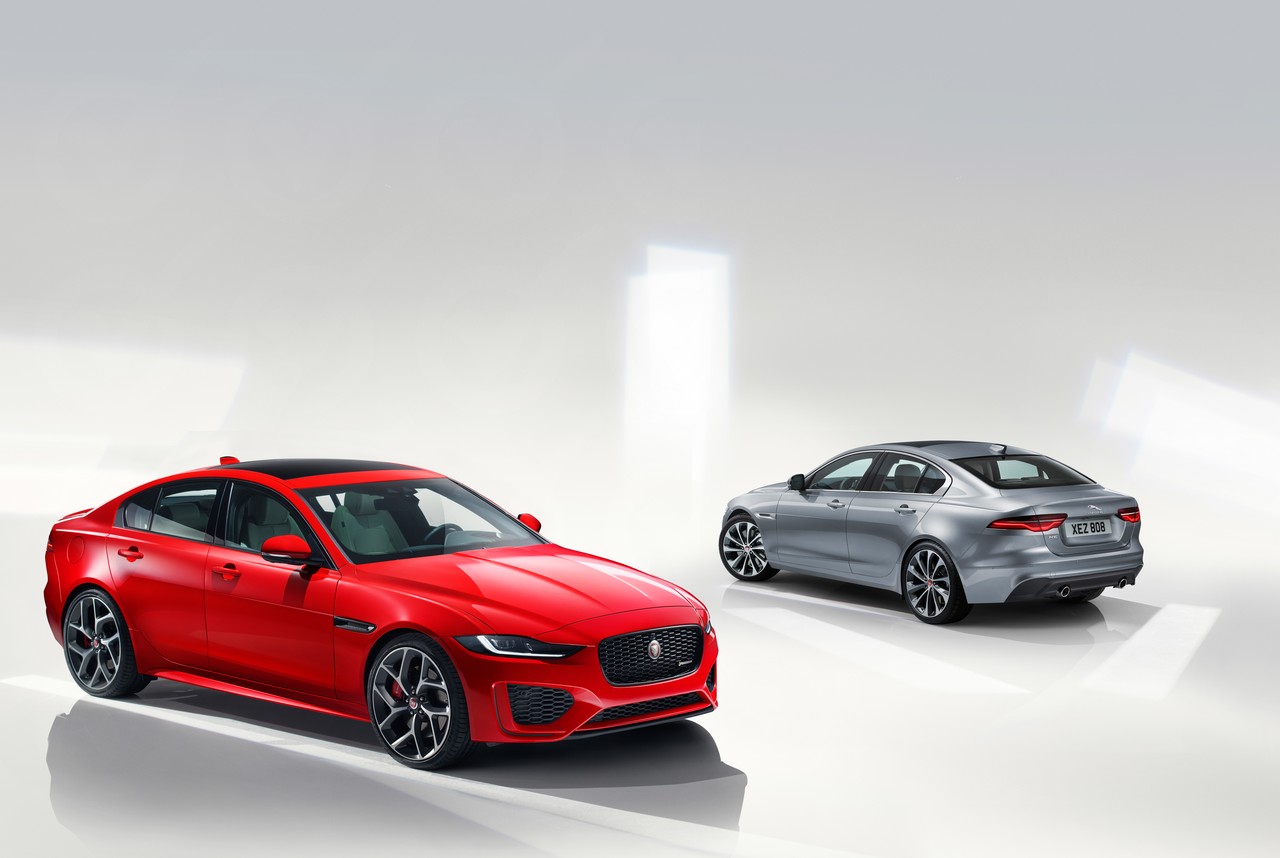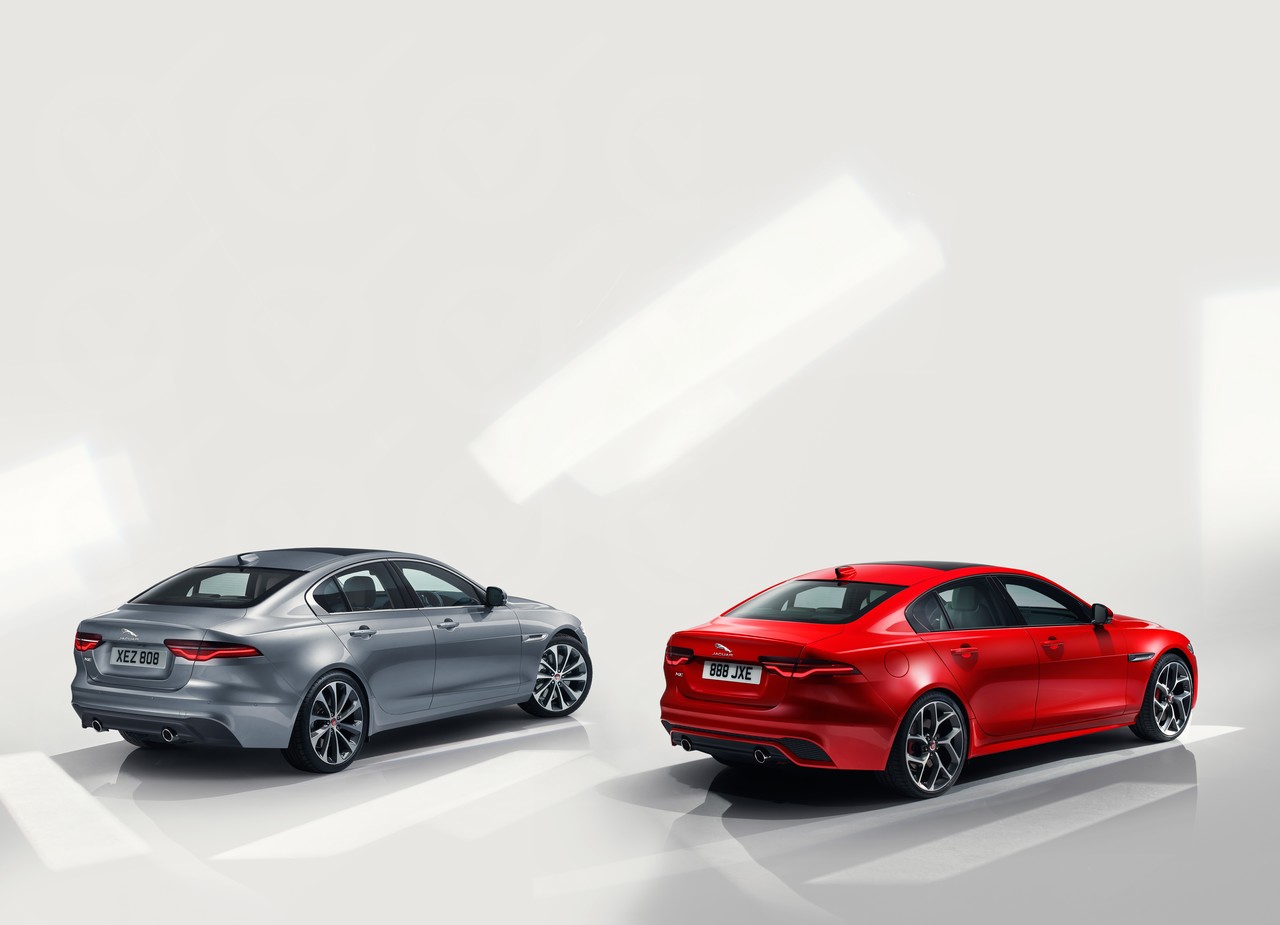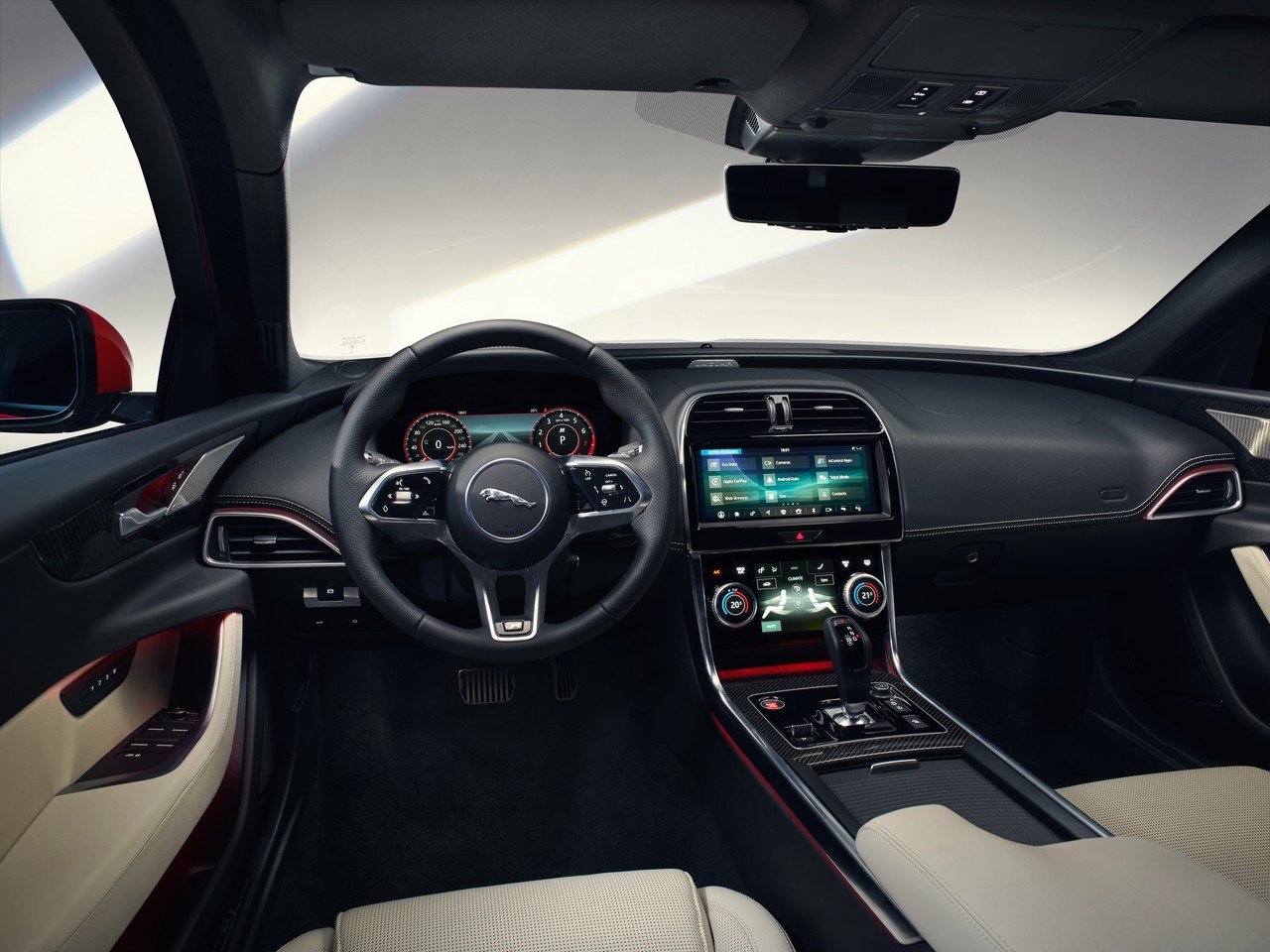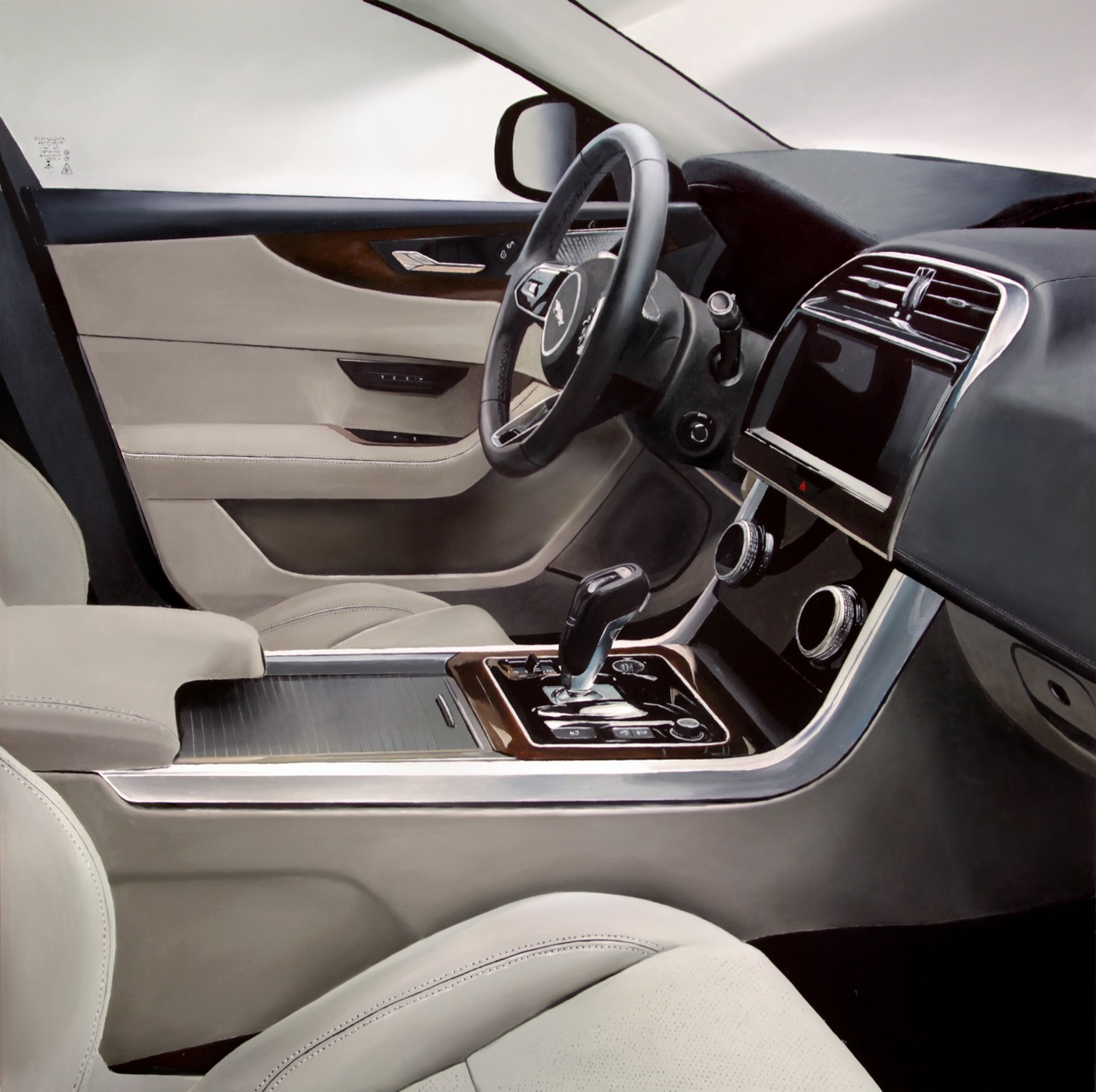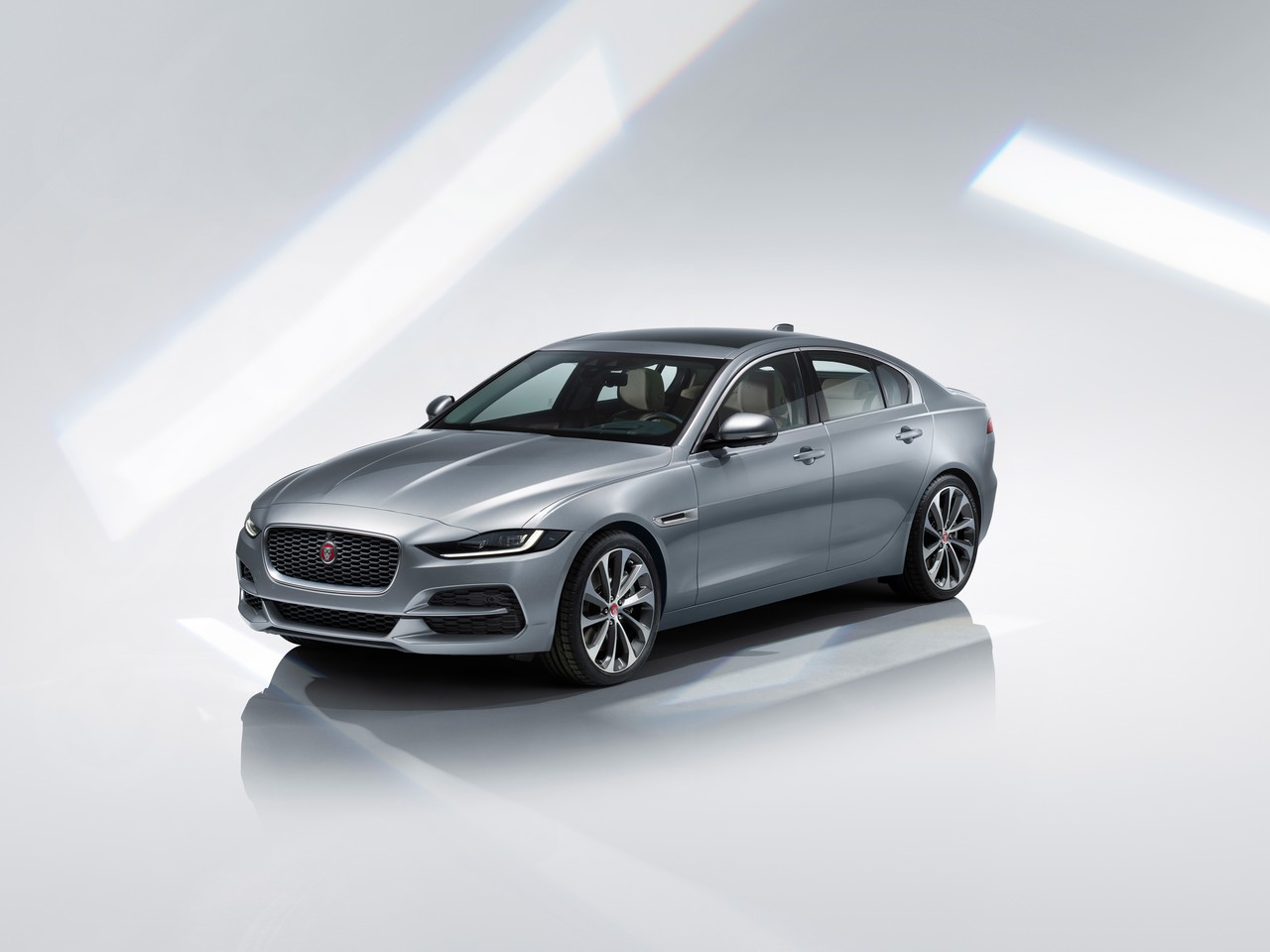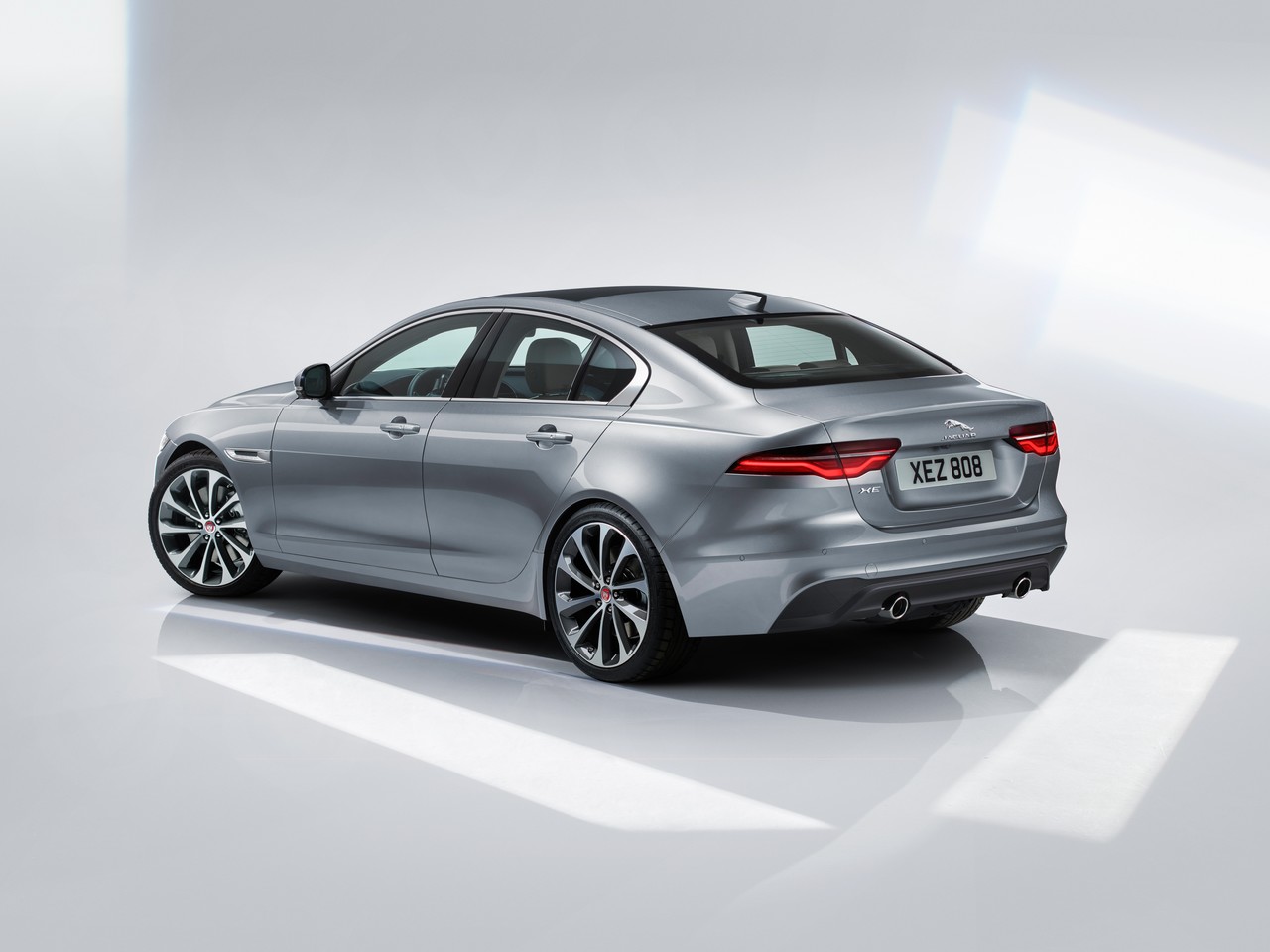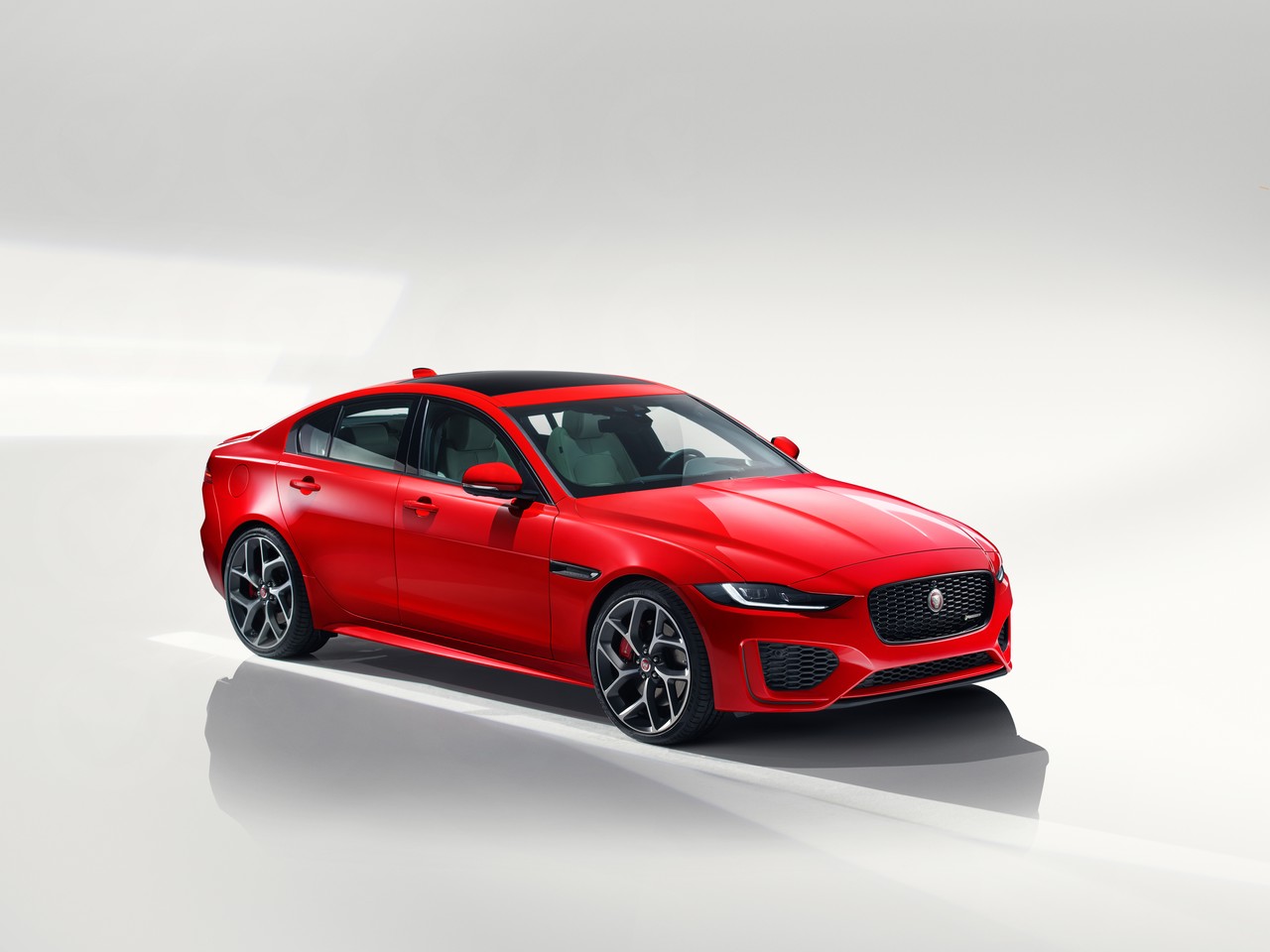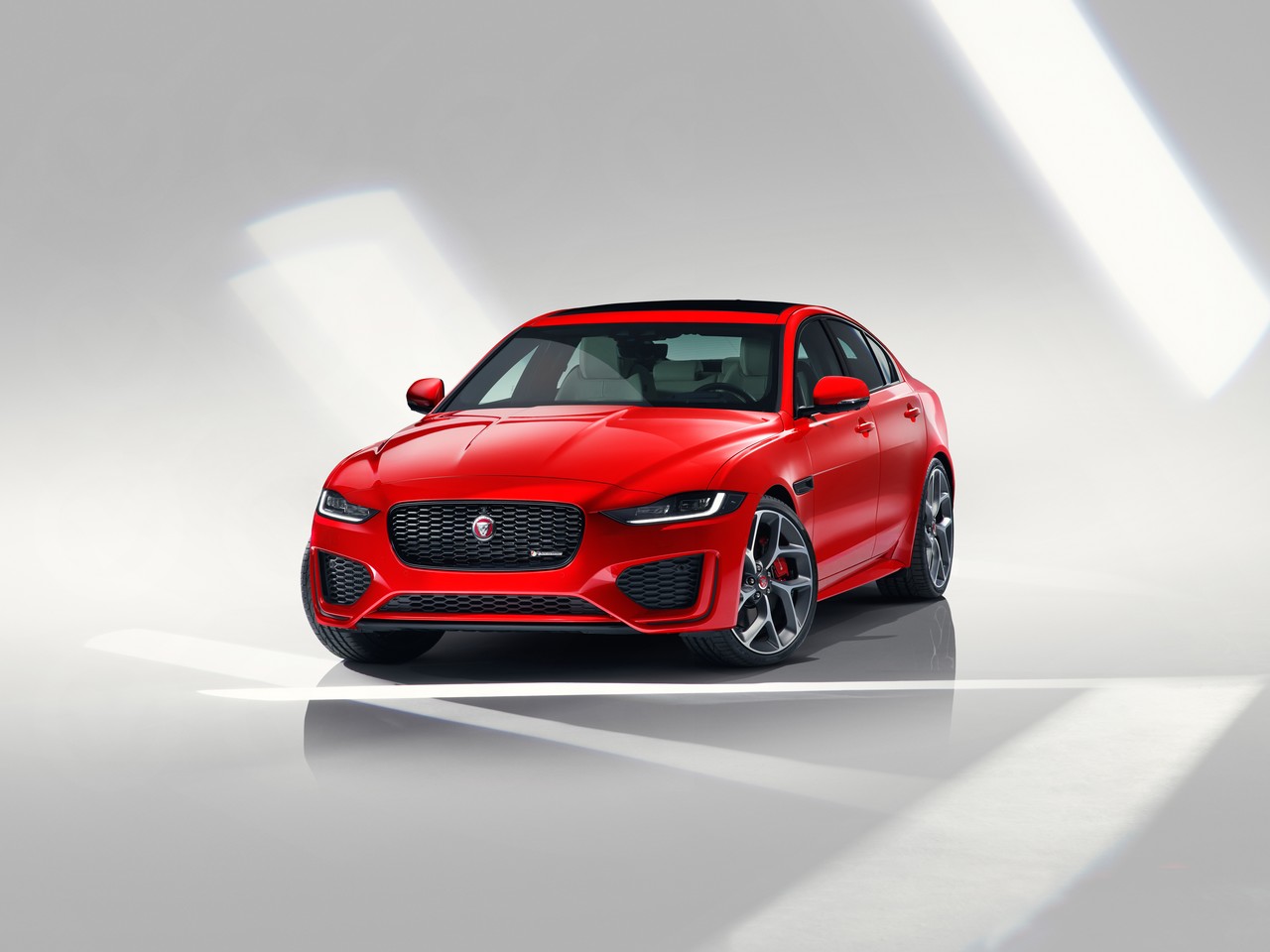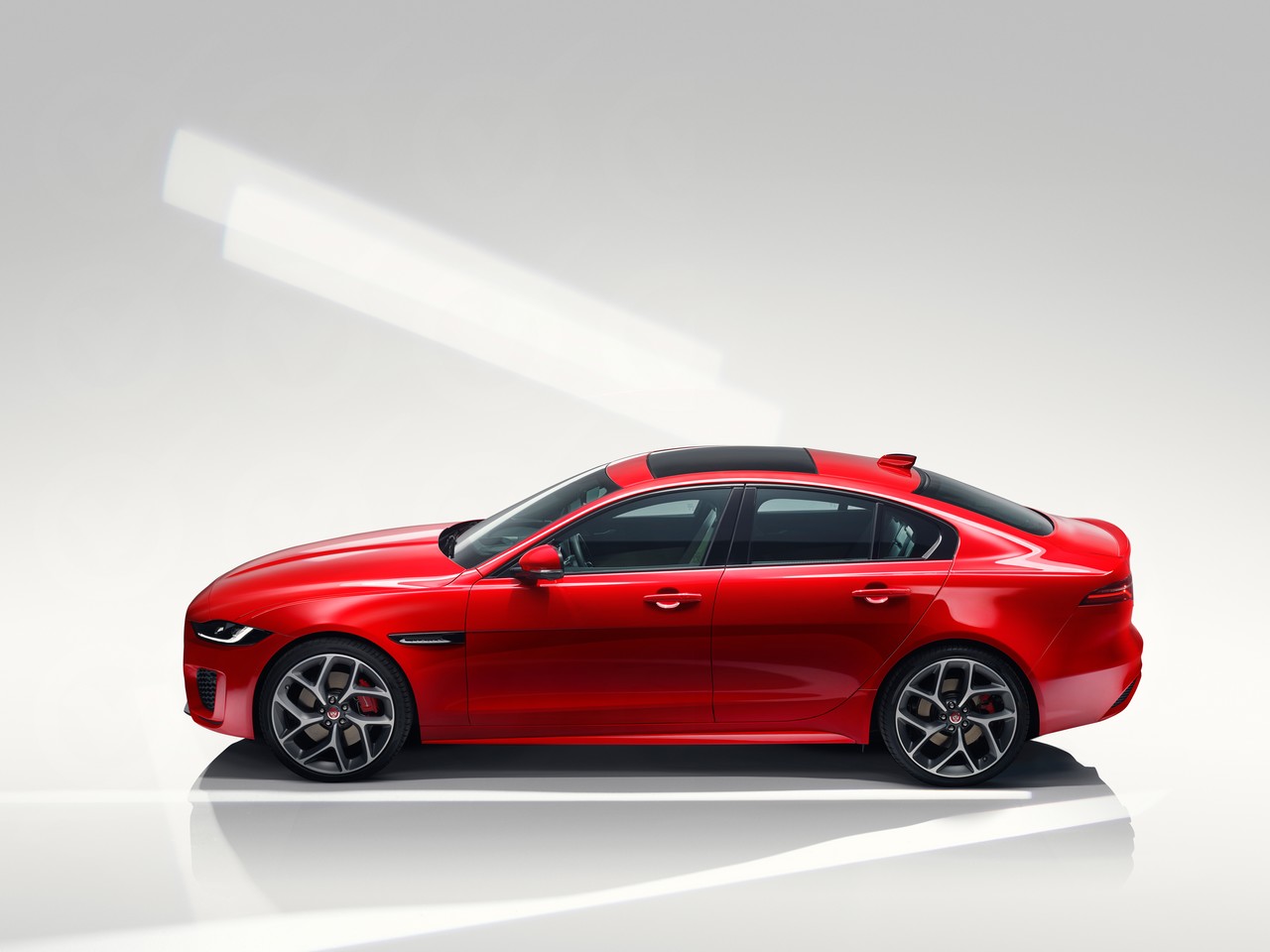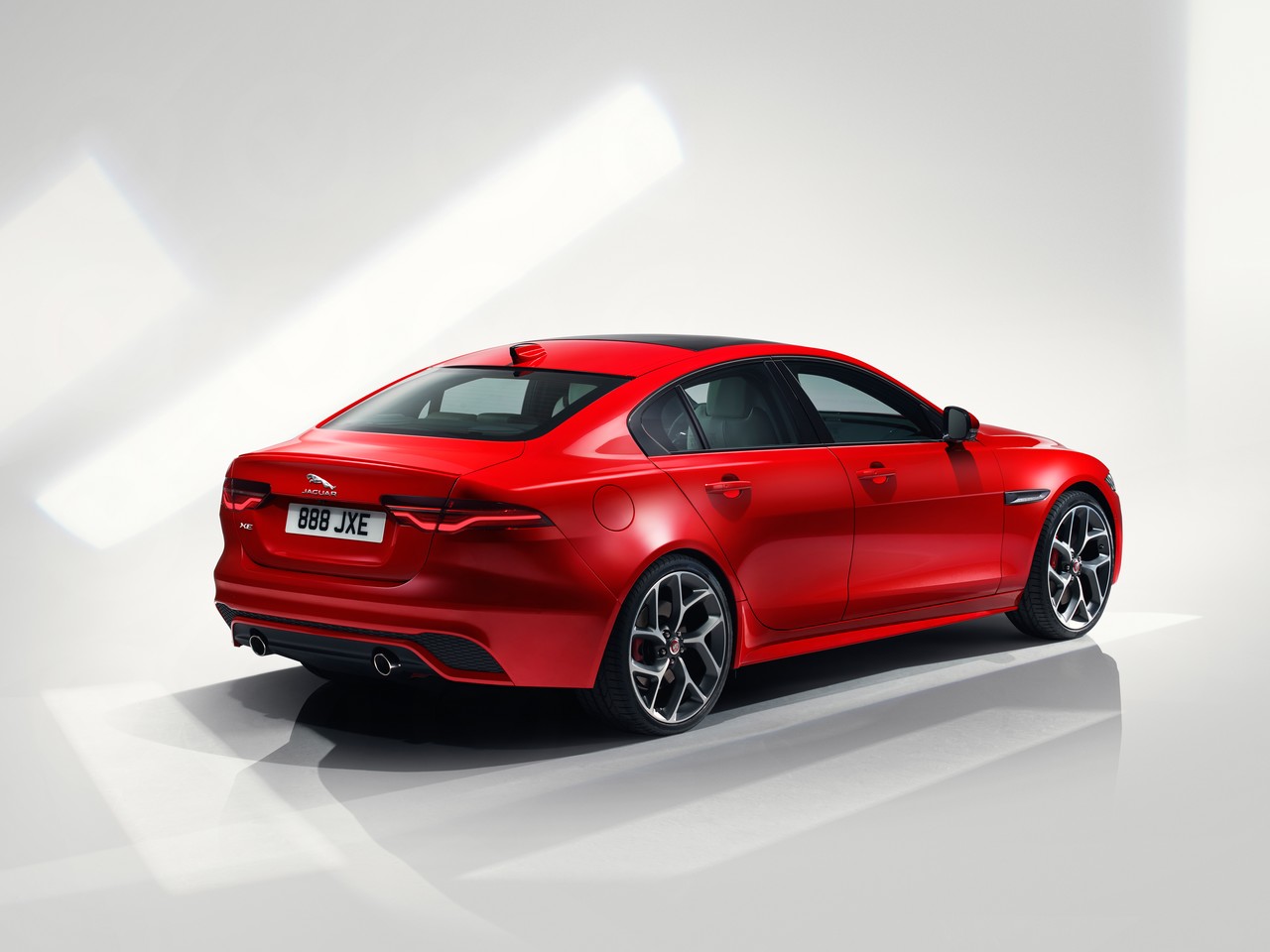
- Modern, fuel-efficient engines
- Impressive ride/handling balance
- Accurate, feelsome steering
- Disruptive stop-start system
- Limited rear seat legroom
- Small boot
Review: Jaguar X760.I XE (2015-19)
Overview
Released in Australia in September 2015, the Jaguar XE was a compact executive sedan. Manufactured in Solihull, UK, the rear-wheel drive Jaguar X760 XE was available with 2.0-litre turbocharged petrol, 3.0-litre supercharged petrol and 2.0-litre turbo-diesel engines. As per the table below, the Jaguar XE range consisted of Prestige, Portfolio, R-Sport and S editions.
Engines
The four-cylinder petrol and turbo-diesel engines were from Jaguar’s newly introduced ‘Ingenium’ engine family which had deep-skirt aluminium cylinder blocks with thin-wall, press-fit cast iron liners. Of the Ingenium engines,
- Producing 132 kW, the 2.0-litre diesel engines had common-rail injection operating at 1800 bar, a single variable geometry turbocharger, double overhead camshafts, four valves per cylinder, a cam phase for variable exhaust valve timing, compression ratios of 15.5:1, exhaust gas recirculation, a selective catalytic reduction (SCR) system and twin counter-rotating balancer shafts;
- Available with 147 kW and 177 kW outputs, the 2.0-litre turbocharged petrol engines had direct petrol injection operating at 150 bar, a single scroll turbocharger, double overhead camshafts, four valves per cylinder, variable intake and exhaust valve timing, compression ratios of 10.0:1 and twin counter-rotating balancer shafts; and,
- Introduced from April 2017 production, the 147 kW and 184 kW Ingenium petrol engines differed in that they had continuously variable intake valve lift, direct injection operating at 200 bar and the exhaust manifold was integrated with the cylinder head casing.
Shared with the F-Type Roadster and F-Type Coupe , the Jaguar XE S was powered by a 3.0-litre V6 petrol engine which had an aluminium alloy block and cylinder head, a twin-vortex Roots-type supercharger, direct injection, double overhead camshafts per cylinder bank, fully variable valve timing, four valves per cylinder and a single balancer shaft.
As standard, the Jaguar XE was fitted with eight-speed ZF 8HP45 automatic transmissions.
| Engine | Years | Trans. | Variant | Peak power | Peak torque | |
|---|---|---|---|---|---|---|
| 20d | 2.0-litre turbo- diesel I4 |
2015-19 | 8sp auto | Prestige, R-Sport |
132 kW at 4000 rpm | 430 Nm at 1750-2500 rpm |
| 20t | 2.0-litre turbo petrol I4 |
2015-17 | 8sp auto | Prestige, R-Sport |
147 kW at 5500 rpm | 280 Nm at 1750-4000 rpm |
| 2017-19 | 8sp auto | Prestige, R-Sport |
147 kW at 5500 rpm | 320 Nm at 1200-4500 rpm | ||
| 25t | 2.0-litre turbo petrol I4 |
2015-17 | 8sp auto | Prestige, R-Sport, Portfolio |
177 kW at 5500 rpm | 340 Nm at 1750-4000 rpm |
| 2017-19 | 8sp auto | Prestige, R-Sport, Portfolio |
184 kW at 5500 rpm | 365 Nm at 1200-4500 rpm | ||
| V6 | 3.0-litre super charged petrol V6 | 2015-17 | 8sp auto | S | 250 kW at 6500 rpm | 450 Nm at 4500 rpm |
| 2017-19 | 8sp auto | S | 280 kW at 6500 rpm | 450 Nm at 4500 rpm |
Development and dimensions
Underpinned by a newly-developed modular architecture, the Jaguar XE had an ‘aluminium-intensive’ monocoque with much of the aluminium being high-strength, 6000-series alloy. Capable of supporting in-line and transverse engine installations, as well as rear- and all-wheel drive, the archiecture also underppined the Jaguar X761 F-Pace SUV and Jaguar X260 XF (the successor to the Jaguar X250 XF ).
The Jaguar XE was 4672 mm long, 1850 mm wide (excluding mirrors), 1416 mm tall and had a 2835 mm long wheelbase; minimum kerb weight was 1474 kg. Furthermore, the Jaguar XE had a drag coefficient of 0.26 Cd.
Steering and suspension
The Jaguar XE had electric power-assisted steering (EPAS), double wishbone front suspension and an ‘Integral Link’ rear axle.
Safety equipment
Standard safety equipment for the Jaguar XE included dual front airbags, a driver’s knee airbag, front side airbags, full-length curtain airbags, ABS, electronic brake force distribution, brake assist, electronic stability control, traction control and front seatbelts with pretensioners and load limiters.
As standard, the Jaguar XE was also fitted with:
- Autonomous Emergency Braking (AEB): used a stereo camera – mounted behind the front windscreen – to provide a three-dimensional view of the road up to 100 metres ahead. At speeds up to 80 km/h, the autonomous emergency braking (AEB) system used this information to detect if a collision is imminent and, if so, would:
- Pre-charge the braking system;
- Warn the driver (via a visual warning in the instrument cluster and head-up display where fitted); and,
- If the driver failed to respond, initiate emergency braking to avoid or mitigate a collision;
- Lane Departure Warning: monitored the vehicle’s position relative to lane markings. If the system detected that the driver crossed those lane markings without indicating, the driver received a visual warning in the instrument panel and haptic warning in the form of steering wheel vibrations;
- Blind Spot Monitoring with Closing Vehicle Sensing: used 24 GHz radar sensors to alert the driver to vehicles quickly approaching from behind – once they were within 70 metres – by displaying an icon the in the instrument panel; and,
- Reverse Traffic Detection: used the same 24 GHz radar to detect approaching vehicles that may cross the driver’s path as the vehicle was reversing.
In the event of a front-end collision with a pedestrian, the Jaguar XE’s bonnet had a deployable hinge system (‘Pedestrian Contact Sensing’) which could create additional clearance between the underside and hard objects such as the engine, suspension towers and bulkhead.
From April 2017 production, the Jaguar XE was available with:
- Blind Spot Assist (BSA): enhanced the existing Blind Spot Monitor system by using the collision warning system in conjunction with the electric power steering system. If BSA detected a vehicle that was in the driver’s blind spot or approaching the blind spot when the driver was changing lanes, a gentle steering force would be applied to keep the vehicle in its lane;
- Forward Traffic Detection: using a forward-facing camera that was mounted in the grille, Forward Traffic Detection sought to assist the driver when forward visibility was restricted by detecting items that may cross the vehicle’s path. If a hazard was detected, a visual warning would be provided on the central screen; and,
- Forward Vehicle Guidance: working in conjunction with the front parking sensors, Forward Vehicle Guidance provided a visual representation of the vehicle that was overlaid with wheel projections showing the alignment of the steering. Furthermore, drivers could see the parking distance displayed on the central screen.
Euro NCAP testing
In Euro NCAP testing , a right-hand drive 2015 Jaguar XE that was powered by a 2.0-litre turbo-diesel engine received a five star safety rating which included a 92 per cent adult occupant protection rating and an 82 per cent child occupant protection rating. In the frontal offset test, protection of the driver’s head, thighs and feet were rated as good, but lower leg protection was rated as adequate (i.e. a slight risk of serious injury) and chest protection as marginal (a moderate risk of serious injury). While maximum points were awarded in the side impact test, chest protection in the more severe pole test was rated as adequate.
All-Surface Progress Control
As standard, the Jaguar XE was fitted with Jaguar’s ‘All-Surface Progress Control’ (ASPC) which controlled acceleration at speeds up to 30 km/h. Operating at speeds between 3.6 km/h and 30 km/h, the driver could activate ASPC and use the cruise control switches on the steering wheel to set the maximum speed. ASPC would then accelerate the vehicle up to that speed, controlling the throttle and brakes (in opposition) to optimise traction on low-friction surfaces such as snow and ice.
Torque Vectoring by Braking
As standard, the Jaguar XE had a ‘Torque Vectoring by Braking’ function which, upon corner entry, applied light braking to the inner wheels (individually) to mitigate understeer.
Features: XE Prestige
Standard features for the XE Prestige included 7.5J x 18-inch ‘Arm’ six-spoke alloy wheels with 225/45 R18 front and 245/40 R18 rear tyres, 380 watt Meridian sound system with eleven speakers (including two subwoofers), 12 channels and Digital Sound Processing (DSP), navigation system with an eight-inch touchscreen, Bluetooth mobile phone connectivity and audio streaming, ‘Jaguar Voice’ control, USB input, Taurus leather seats with contrasting stitching, dual-zone climate control air conditioning, ten-way power adjustable front seats with driver’s seat memory settings, cruise control, bi-function HID xenon headlights with washers, a rear view camera, front and rear parking sensors, automatic headlights, rain-sensing wipers, 40:20:40 split and folding rear seats, remote central locking and proximity key (i.e. keyless entry), power mirrors with heating function, power windows, a power adjustable steering wheel (for reach and rake), an auto-dimming rear view mirror, push-button start, tyre pressure monitoring, carpet mats and phosphor blue ambient lighting.
As standard, the Jaguar XE also had an ‘automatic park assist’ function which could provide automated steering for entry and exit of both parallel and bay parks.
Features: XE R-Sport
Compared to the Prestige, the XE R-Sport was further equipped ‘Star’ five-spoke alloy wheels and sports seats in Luxtec with mesh inserts. The XE R-Sport also featured an R-Sport branded soft grain leather sports steering wheel and was fitted with an R-Sport bodykit which included a unique front bumper, body-coloured side sills and bootlid spoiler, and gloss black window surrounds.
Features: XE Portfolio
Compared to the Prestige, the XE Portfolio added ‘Matrix’ seven twin-spoke alloy wheels, soft-grain Windsor leather seats with Herringbone perforations and a powered-operated rear windscreen blind.
Features: XE S
The range-topping Jaguar XE S was distinguished by its 7.5J by 19-inch ‘Venom’ five twin-spoke silver/diamond turned alloy wheels with 225/40 R19 front and 255/35 R19 rear tyres, Taurus grain leather sports seats with suede inserts, ‘S’ branded soft grain leather sports steering wheel, ‘Jet’ headlining and stainless steel pedal covers
The XE S was identifiable by its gloss black radiator grille with Satin Chrome surrounds and bodykit which included an ‘S’ front bumper, body coloured side sills, gloss black rear valance and window surrounds, and bootlid spoiler. The XR S also had red painted brake calipers.
April 2017 update (‘2018 model year’)
From April 2017 production,
- The Jaguar XE could be specified with Jaguar’s ‘Configurable Dynamics’ as a standalone feature; Configurable Dynamics enabled the driver to adjust settings for steering assistance, throttle response and transmission behaviour;
- Jaguar ‘Gesture Boot Lid’ was available on XE vehicles with keyless entry and rear parking sensors. The Gesture Boot Lid enables the driver to open and close the boot by waving their foot under either side of the rear bumper;
- The Jaguar XE could be specified with a 12.3-inch TFT instrument cluster with full-screen navigation and 3D maps; and,
- A ‘Dual View’ screen was introduced for the InControl Touch Pro multimedia system. The Dual View screen enabled the driver and front passenger to view different infotainment displays from the central ten-inch touchscreen.
Specifications
- Specification and Price Guide: Jaguar X760 XE (June 2015)
- Specifications: Jaguar X760 XE (June 2016)
Related links
Review: Jaguar X760.II XE (2019-24)
Overview
The Jaguar X760 Series II (X760.II) XE was available to order from February 2019. For Australia, the X760.II XE range consisted of P300 variants that were offered in R-Dynamic SE and R-Dynamic HSE editions. The P300 variants were powered by a 2.0-litre turbocharged petrol engine – mated to an eight-speed ZF transmission – and could accelerate from rest to 100 km/h in 5.9 seconds. Over the combined ADR 81/02 test cycle, fuel consumption was 6.7 litres per 100 km.
Styling
Visually, the Jaguar X760.II XE could be identified by its new bumpers, wider front apertures, all-LED headlights with ‘J’ blade daytime running lights, and LED tail-lights with updated signature graphics. Distinguishing cues for the XE R-Dynamic editions included ‘aircraft winglet-inspired sculpted surfaces’ and dark mesh detailing for the rear valance.
Interior
Inside, the Jaguar X760.II XE introduced Jaguar’s ‘Touch Pro Duo’ infotainment system (for the XE R-Dynamic HSE) which had two high-resolution touchscreens and a 12.3-inch interactive driver display in place of the instrument cluster. The X760.II XE also received new door trims and a new steering wheel – shared with the Jaguar i-Pace – which featured hidden-until-lit graphics and tactile switches.
| Var. | Edition | Engine | Trans. | Peak power | Peak torque |
|---|---|---|---|---|---|
| P300 | R-Dynamic SE, R-Dynamic HSE |
1997 cc twin-scroll turbo petrol I4 | 8sp auto (ZF 8HP45) |
221 kW at 5500 rpm | 400 Nm at 1500-4500 rpm |
Safety equipment
Standard safety equipment for the Jaguar X760.II XE was unchanged.
For the active safety technologies, the Jaguar X760.II XE R-Dynamic SE was equipped with:
- Autonomous Emergency Braking (see description above);
- Lane Keep Assist (LKA): could return the vehicle to the centre of its lane by applying a small amount of counter-steering through the steering system. However, this steering torque could be over-ridden by the driver;
- Rear Traffic Monitor: could detect vehicles, pedestrians or other hazards approaching from either side of the vehicle when the driver was reversing out of a parking bay. If detected, the driver would be alerted via audio and visual warnings;
- Traffic Sign Recognition (included an Adaptive Speed Limiter); and,
- Driver Condition Monitoring: monitored driver behaviour for signs of fatigue and provided multi-stage warnings in the instrument panel recommending the driver take a break.
The Jaguar X760.II XE R-Dynamic HSE was further equipped with –
- Adaptive Cruise Control with stop & go (including Forwards Alert, Queue Assist and Follow Mode functions); and,
- Blind Spot Assist (see description above).
Features: Jaguar XE R-Dynamic SE
The standard infotainment system for the Jaguar XE R-Dynamic SE consisted of a six speaker sound system, Digital Audio Broadcast (DAB) radio tuner, 10-inch ‘Touch Pro’ touchscreen, satellite navigation (Jaguar’s ‘Connected Navigation Pro’), Bluetooth mobile phone connectivity and audio streaming, Android Auto and Apple CarPlay smartphone integration, and auxiliary (3.5 mm) and USB sockets.
Standard features for the Jaguar XE R-Dynamic SE included 18-inch five split-spoke alloy wheels, twelve-way power adjustable front seats, dual-zone climate control air conditioning, cruise control with speed limiter, LED headlights with daytime running lights, dusk-sensing headlights, rain-sensing wipers, a rear view camera, a leather wrapped steering wheel, remote central locking with proximity key, heated door mirrors with power adjustment and folding, power windows, an auto-dimming rear view mirror, tilt and telescopic steering wheel adjustment, 12.3-inch digital instrument display (Jaguar’s ‘Interactive Driver Display’), 12 volt power sockets, ambient interior lighting, illuminated vanity mirrors, tyre pressure monitoring, carpet mats, a trip computer and an immobiliser.
As standard, the Jaguar XE R-Dynamic SE was also equipped with –
- 360 degree parking Aid: used sensors around the vehicle to provide a virtual overhead view of the vehicle on the central touchscreen. As the driver manoeuvred the vehicle, the touchscreen would display would update and the driver would receive audio feedback to indicate the distances to obstacles; and,
- Park Assist: provided automated steering for parallel and perpendicular parking manoeuvres.
Features: Jaguar XE R-Dynamic HSE
The Jaguar XE R-Dynamic HSE was distinguished by its 19-inch 10-spoke alloy wheels, two ten-inch touchscreens (Jaguar’s ‘Touch Pro Duo’), a 380 watt Meridian sound system with ten speakers and a subwoofer, sixteen-way power adjustable front seats, power adjustable steering column and memory settings (for the driver’s seat and door mirrors).
Related links
